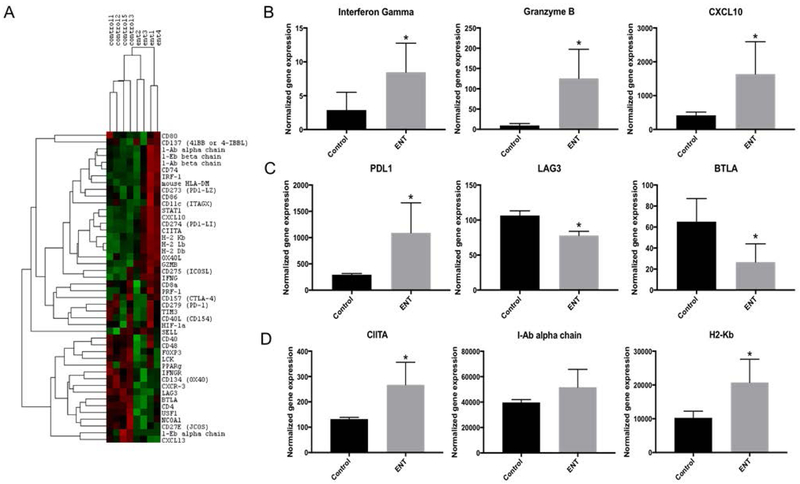Figure 2: By NanoString® analysis, entinostat (ENT) induces significant changes in mRNA expression of multiple genes involved in anti-tumor immunity.
C57Bl/6 mice were treated with either ENT or vehicle control for 14 days (n=4 per group). NanoString® analysis was performed on omental tumors. A) In a selected panel of 50 genes specific to the adaptive immune response, unsupervised hierarchical clustering shows distinct gene expression patterns in omental tumors from C57Bl/6 mice treated with ENT compared to vehicle controls. Green indicates downregulated genes, while red indicates upregulated genes. B) ENT treatment led to a significant increase in expression of T cell effector molecules, including interferon gamma (8.5 vs. 2.9, p=0.039), granzyme B (125.4 vs. 9.5, p=0.008), and CXCL10 (1,636.4 vs. 417.0, p=0.023). C) ENT-treated mice showed significantly increased expression of the immune checkpoint molecule PDL1 (1,090.6 vs. 294.2, p=0.016) and significant decreases in immune checkpoints LAG3 (78.0 vs. 106.5, p<0.001) and BTLA (26.6 vs. 65.11, p=0.017). D) ENT treatment significantly increased expression of CIITA (267.4 vs. 132.1, p=0.011) and the MHCI pathway (20,728.3 vs. 10,272.8, p=0.013). There was a trend towards increased MHCII pathway expression, although this was not statistically significant (51,667.3 vs. 39,683.12, p=0.098). H2-Kb and I-Ab alpha chain are shown and are representative of the other genes in the MHCI and MHCII pathways, respectively. *indicates p<0.05

